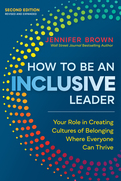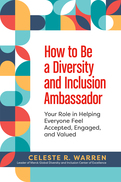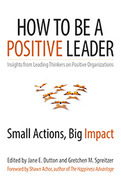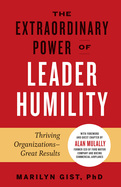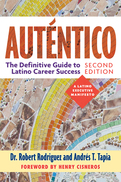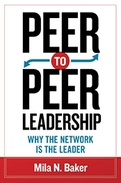The need for inclusive leadership has never been more urgent. In the United States, the wealth gap is the greatest it has ever been, with women, people of color, and other marginalized communities being the most impacted by economic and societal inequities. In the workplace, representation is still sorely lacking across every industry. Pay disparities, low wages, and lack of benefits continue to characterize many jobs in the nation's labor force. These realities have an impact on generations, communities, and our society overall. To build a more equitable future, leaders must grasp the urgency of their role and responsibility in the change effort.
In this updated and greatly expanded second edition of her bestselling book, Jennifer Brown takes a deeper dive into what it takes to be an inclusive leader and examines the challenges and mindsets that continue to hold many leaders back. Combining nearly two decades of professional DEI expertise with personal experience and reflection, she tackles complex topics such as identity, privilege, and systemic inequities. Following her widely acclaimed Inclusive Leader Continuum, Brown makes the journey to becoming an inclusive leader more informed and actionable by offering new structure and content throughout the new edition of the book, including new insights and stories, detailed strategies and tools, and discussion guides to spark learning at the individual and organizational levels.
Whether you are already a fan of the first edition of How to Be an Inclusive Leader or are just embarking on your journey to become a more inclusive leader, this book will meet you where you are and equip you to take action and step into your role in the change effort.
Creating a diverse workplace needs to be an ongoing effort, not just the subject of occasional training. As Celeste Warren says, needed change won't take place unless all employees feel that they have a role to play in creating the culture they would like to see in their organization.
Regardless of what position you hold, you have the ability to impact change and create a more inclusive environment. Anyone can commit to becoming an unofficial Diversity and Inclusion Ambassador in his or her organization. Warren offers a straightforward three-stage model:
Become aware of your strengths, weaknesses, and conscious and unconscious biases.
Take an inventory of your surroundings: what is getting in the way of there being an inclusive environment in your organization?
Develop a personal action plan.
Depending on your position, the actions you take can be as simple as consistently raising DEI-related issues in staff meetings or as far-reaching as leading an Employee Resource Group or developing a new hiring policy. In separate chapters, Warren offers specific advice for chief diversity and inclusion officers, C-suite leaders, first-line managers, human resources practitioners, and individual contributors. This book features examples, exercises, and practical tools that show you how to assess where your organization is at and develop a purpose and strategy that can make diversity a workplace reality.
—Ken Blanchard, coauthor of The New One Minute Manager and coeditor of
Servant Leadership in Action
On the most fundamental level, leaders must bring divergent groups together and forge a consensus on a path forward. But what makes that possible? Humility—a deep regard for the dignity of others—is the key, says distinguished leadership educator Marilyn Gist.
Leadership is a relationship, and humility is the foundation for all healthy relationships. Leader humility can increase engagement and retention. It inspires and motivates. Gist offers a model of leader humility derived from three questions people ask of their leaders: Who are you? Where are we going? Do you see me? She explores each of these questions in depth, as well as the six key qualities of leader humility: a balanced ego, integrity, a compelling vision, ethical strategies, generous inclusion, and a developmental focus.
Much of this book is based on Gist's interviews with a dozen distinguished leaders of organizations such as the Mayo Clinic, Costco, REI, Alaska Airlines, Starbucks, and others. And the foreword and a guest chapter are written by Alan Mulally, the legendary leader who brought Ford back from the brink of bankruptcy after the 2008 financial collapse and whose work is an exemplar of leader humility.
America has an urgent need for Latino and Latina executives. This book identifies a path to uplift and amplify their representation in leadership.
Latinos and Latinas will account for a third of our workforce by 2050-yet they make up only 5 percent of senior roles in corporate America. Dr. Robert Rodriguez and Andrés T. Tapia call this low percentage of Latino and Latina corporate executives today the “5 percent Shame.”
Inspired by Price M. Cobbs's seminal work on the secrets of successful Black leaders, this book seeks to understand the impact on Latinos and Latinas of the external forces of conscious and unconscious biases and of the internal forces of whether to assimilate or double down on their cultural identities in their quest to get ahead.
The second edition features a new foreword by Henry Cisneros, former secretary of the Department of Housing and Urban Development, as well as updated statistics and graphs to represent how America's career landscape for Latinos has and has not changed and how to ensure Latinos can rise to their fullest potential.
Using insights from in-depth interviews with twenty highly successful boomer Latino and Latina executives and focus groups with dozens of Gen X and millennial leaders, the authors have captured lessons about how these individuals chose their career paths, addressed challenges, and seized opportunities. The discussions are interpreted through the lenses of the authors' different personal experiences as Latino leaders in corporate America and synthesized as a guide for future leaders.
The idea of hierarchy is breaking down everywhere, from politics to religion to social relationships-why should leadership be any different?
- Shows that a radically decentralized approach can revolutionize leadership just as it has revolutionized computer networking
- Turns leadership on its head-the job of the leader is not to tell followers what to do but to create, enable, and facilitate a network of peer leaders
- Features examples of what some organizations are doing and what all organizations can do to implement and benefit from this new approach
Our leadership models are still stuck in a top-down, command-and-control, Industrial Age mentality. But our globalized, data-drenched, 24/7 world is just too complex, with too much information coming from too many different directions, for any single person or group of people to stay on top of it. The idea of hierarchy is breaking down everywhere, from politics to religion to social relationships-why should leadership be any different?
Mila Baker's inspiration for a new way to lead is the peer-to-peer model of computing, which is also mirrored in social networking and crowdsource technologies. She shows that a network with "equipotent" nodes of power-think peer leaders-is infinitely more powerful than a "client-server" (leader-follower) network.
In organizations of equipotent nodes, leadership isn't fixed or siloed-it shifts based on the particular strengths of individuals and the particular needs of a situation. Rather than being guided into narrow predetermined channels, information flows freely so those who need it can find it easily and are empowered to act on it immediately. Constant change is built into the very structure of these organizations, and giving feedback is no longer a separate (and often dreaded and ineffective) process but becomes an organic part of the workflow, enabling rapid course corrections.
Baker still advocates the need for top-level executives and senior leaders, but their job is to optimize the health of the network rather than issue commands. Companies such as Gore and Herman Miller practice these principles and have achieved long-term success-Baker provides a structure for this approach that any organization can adapt to build flexibility, resiliency, and accountability.


